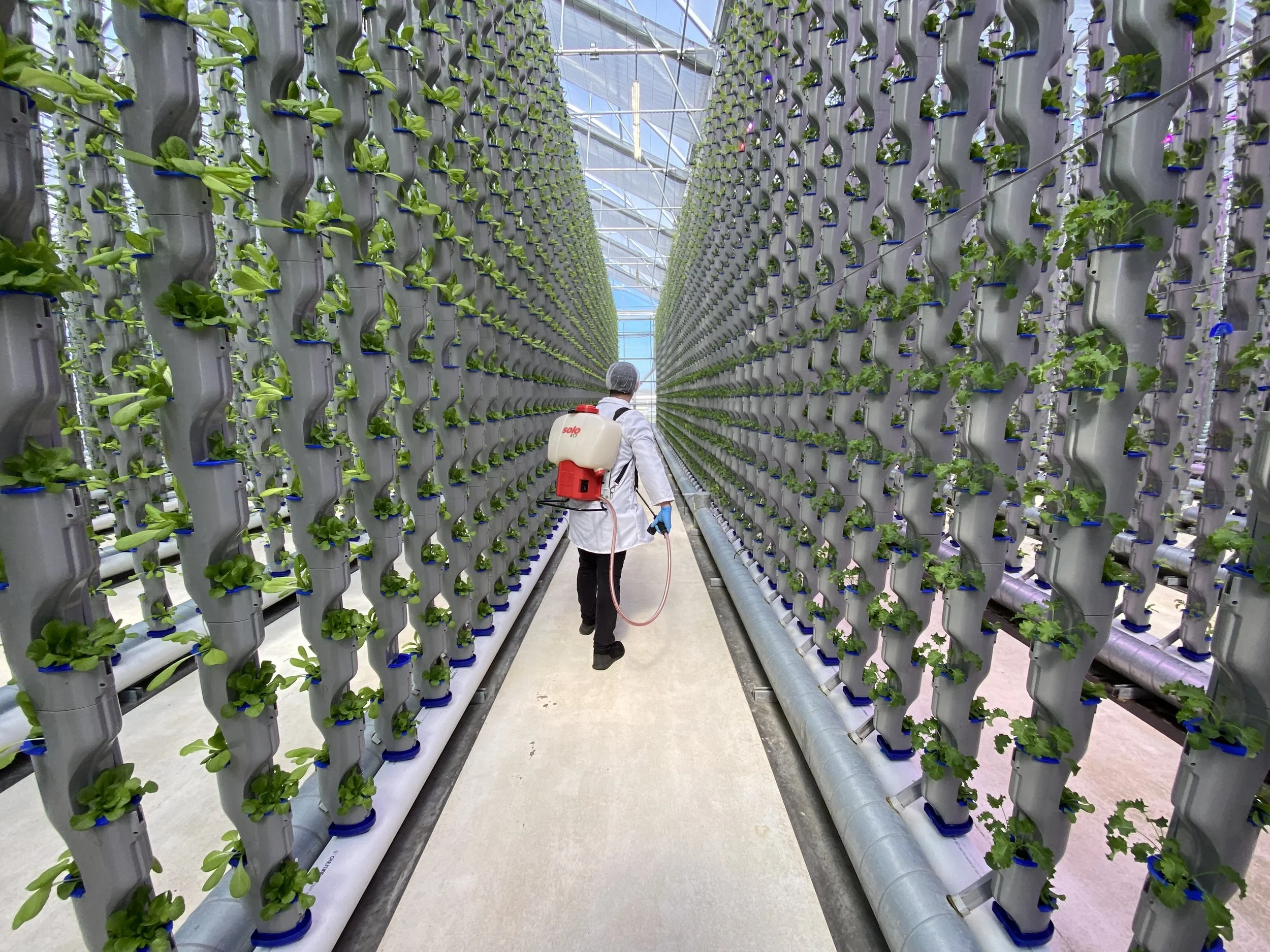Navigating pesticide use in produce: Diverse approaches from industry leaders
Indoor farms offer integrated pest management and food safety protocols without pesticide use
Indoor farms or controlled environment agriculture (CEA) promise to produce climate-resistant crops without pesticides and fertilizers while implementing technologies like robotics and AI to streamline growth and production.
While the sector’s emergence into the US produce market was off to a rocky start with past company’s failures due to high energy costs, labor challenges and product consistency, vertical farms are evolving towards profitability and consistency.
Integrating pest management practices and food safety protocols vary by a farm’s culture and operations, however, indoor farms reduce the risk of contamination found in outdoor agriculture, Aaron Fields, VP of agriculture, Eden Green Technology, told FoodNavigator-USA.
“Any CEA structure will prevent some threats compared to a traditional, field method of growing produce. Pesticide contamination happens when a toxic substance is found in elevated levels. Since indoor farming reduces the risk of pests, less pesticide usage is needed. And thus, any chance of contamination is reduced compared to traditional farming,” Fields said.
Eden Green grows leafy greens and herbs in its Cleburne, Tx. facility. In April, the company launched its herb program as a solution to driving down herb costs that are typically imported into the US.
“Indoor farms, by design, protect plants from many of the threats that exist in outdoor environments, lessening the probability of contamination and decreasing the need for harmful pesticides (e.g. the scary ones with a longer half-life, ones that accumulate on plants, or are systemically introduced into the plant, which can negatively impact surrounding wildlife and humans," Fields said.
Eden Green relies on certification from the Organic Materials Review Institute (OMRI), which reviews a company’s products against organic standards. OMRI-certified solutions serve as a solution to “deter small pests and prevent the growth of food-borne illnesses,” Eddy Badrina, CEO, Eden Green, told FoodNavigator-USA.
The indoor farm also has the benefit of growing produce hydroponically, which eliminates concern around pesticide risk and disease.
“At Eden Green, we work with all natural solutions and do not need to use harmful pesticides.”
“At Eden Green, we work with all natural solutions and do not need to use harmful pesticides. Plus, one of the benefits of indoor vertical farming is we do not have soil. We grow plants hydroponically, so we do not have the same threats to worry about compared to traditional farming methods,” Fields said.
Oishii, an indoor farm company that grows specialty Japanese varietals of strawberries and tomatoes via farmers, robots and bees, is located in a 72,000 square foot Jersey City, NJ facility called Mugen Farm. The company recently expanded its production and operations with the opening of its Phillipsburg, NJ facility, Amatelas Farm, which is expected to increase output by 20 times. The indoor farm, which spans nearly 240,000 square feet, runs on renewable energy, in addition to recycling a majority of its water.
Oishii implements “highly controlled indoor farm environments,” Rita Hudetz, chief commercial officer, Oishii, told FoodNavigator-USA. This includes clean suits and “air showers” for its farmers “to mitigate any risk of introducing unwanted pests” in its farms.
Hudetz highlighted Oishii’s monitoring system that combines AI and visual recognition as additional security “to detect the presence of pests,” which would not be possible in an outdoor farm.
While indoor farming provides consumers with confidence around no risk pesticide contamination, Hudetz pointed out that pesticide risk “varies wildly from product to product,” and consumers must do their due diligence to determine how the produce was grown, emphasizing “there is even a debate among experts as to what constitutes ‘safe’ exposure levels."

